Lecture 9
1/30
Earn XP
Description and Tags
Learning Obj -types of behavior assessments -benefits and drawback of assessments -alt assessment -adoption matching
Name | Mastery | Learn | Test | Matching | Spaced |
|---|
No study sessions yet.
31 Terms
Why do we do behavior assessments in shelters
safety of staff, other animals and the public
determine best outcome for animal
adoption, foster, rescue, mandatory training, euthanasia
improve animal well-being while in shelter
reduce or acknowledge LOS
ASPCA’s position on behavior assessments
ASPCA acknowledges that
it’s still unknown whether any particular source of info is more predictive of future behavior in a home than any other and,
current scientific thinking on usefulness of behavior assessments in predicting aggressive behavior is inconclusive
recommends that, unless aggressive behavior during an assessment is egregious, shelters should consider it valid only if corroborated in another environment
SAFER assessment (Safety Assessment for Evaluating Rehoming)
developed by ASPCA in collab w/ research/behavior specialists, shelter staff piloting data
common in practice to do SAFER for each dog (unless staff/behavior resources low)
other assessments available, however not commonly used/discontinued use (Match-Up II, Assess-a-pet)
some components designed to help w/ adoptive home matching, but mainly designed to determine SAFETY of rehoming
person doing assessment should be unfamiliar w/ animal to prevent bias
SAFER tools
assessment room
ideal: large, quiet, relatively empty, at least 10’ x 10’ can work
video cam and tripod
records every assessments
behaviors occurs quick and review can help what behavior was
quality control to review assessor handling and improvement provided
assess-a-hand
used for 2 assessment items
food bowls
food behavior item
appropriate size for dog
metal bowls preferred bc most easily slide across floor when manipulated
2 armless chairs
observer and assessor should be seated during the same items
dry and canned dog food (at least 2 types)
food behavior assessment
mod value food (kibble mixed w/ canned)
2 types provided if dog doesn’t like the 1st choice
2 to 3 toys
toy behavior item
big enough to be removed from dog’s mouth
varied textures and shapes
recommend rope and squeaky
new unbasted rawhide per dog
large enough that it can be touch w/ assess-a-hand when dog has it in mouth
buckle or martingale collar
during assessment, dog must wear collar w/ buckle or clasp that doesn’t tighten when leash is tugged
buckle collar preferred
6 ft leash
cotton web, nylon or leather leashes ½ in to 5/8 in in width strong and easy to handle
optional sound machine
emit white noise to buffer noise outside assessment room
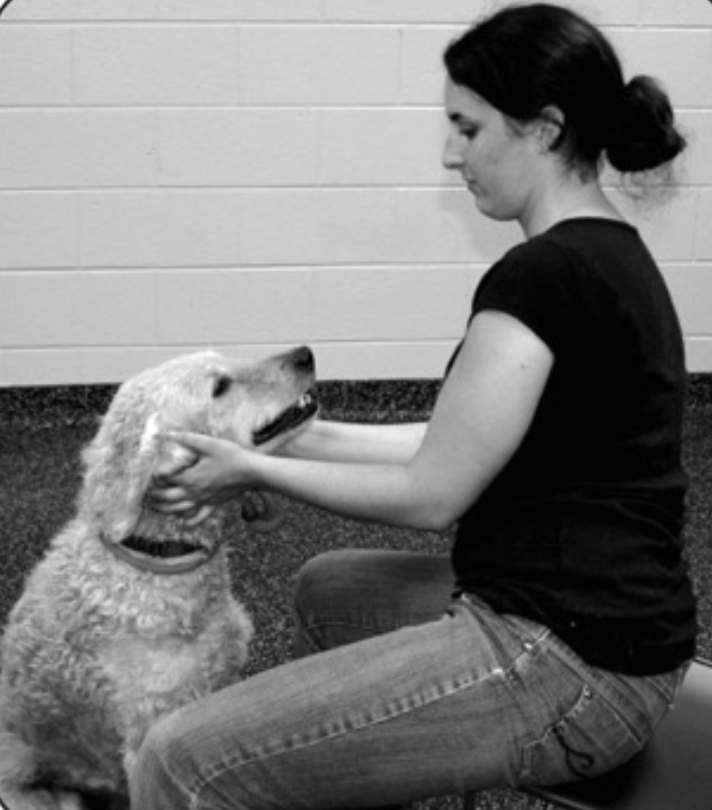
SAFER item 1: Look (Scoring and what it tells us)
Tells us
how dog responds to gentle restraint
how dog responds to eye contact from a stranger
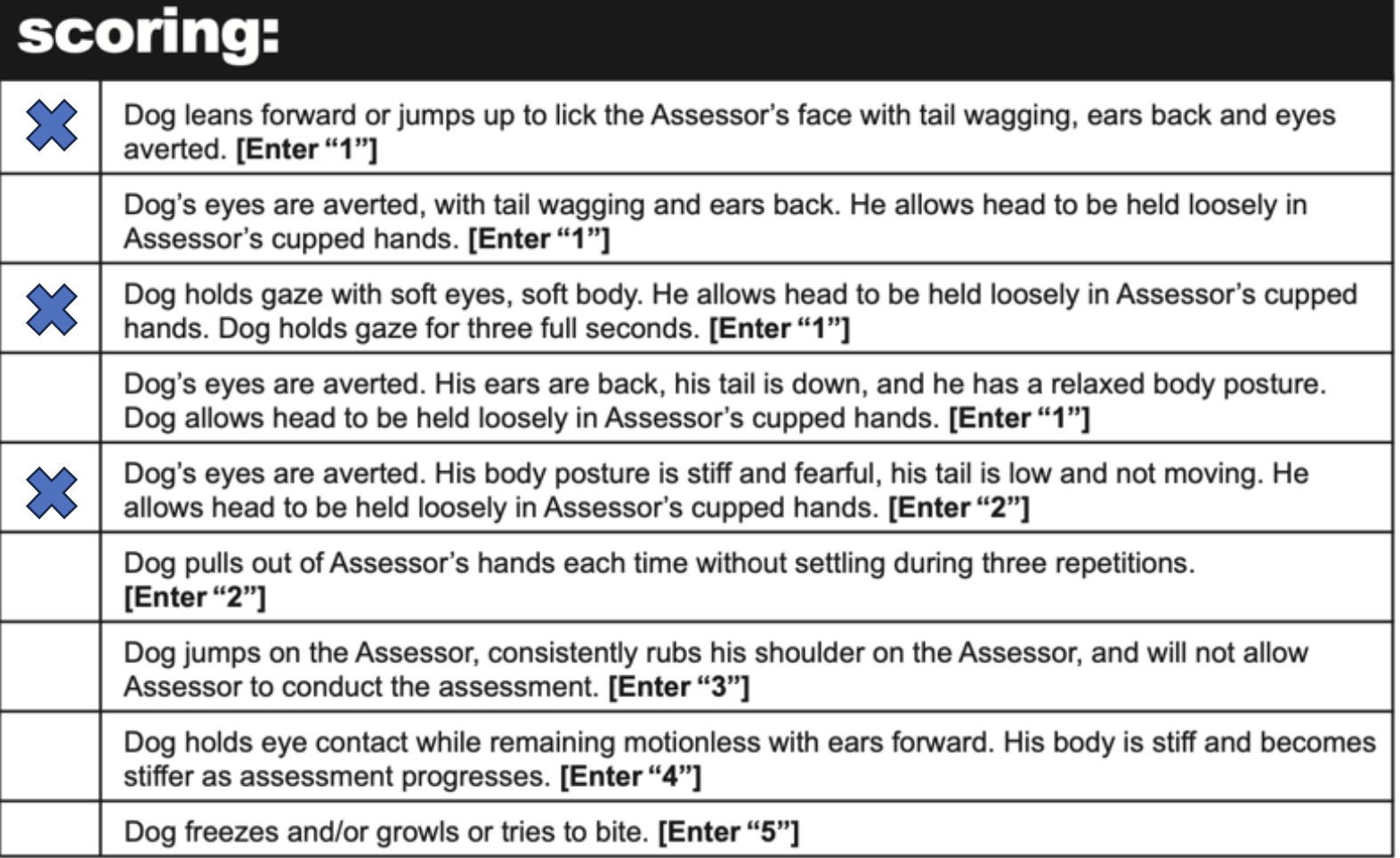
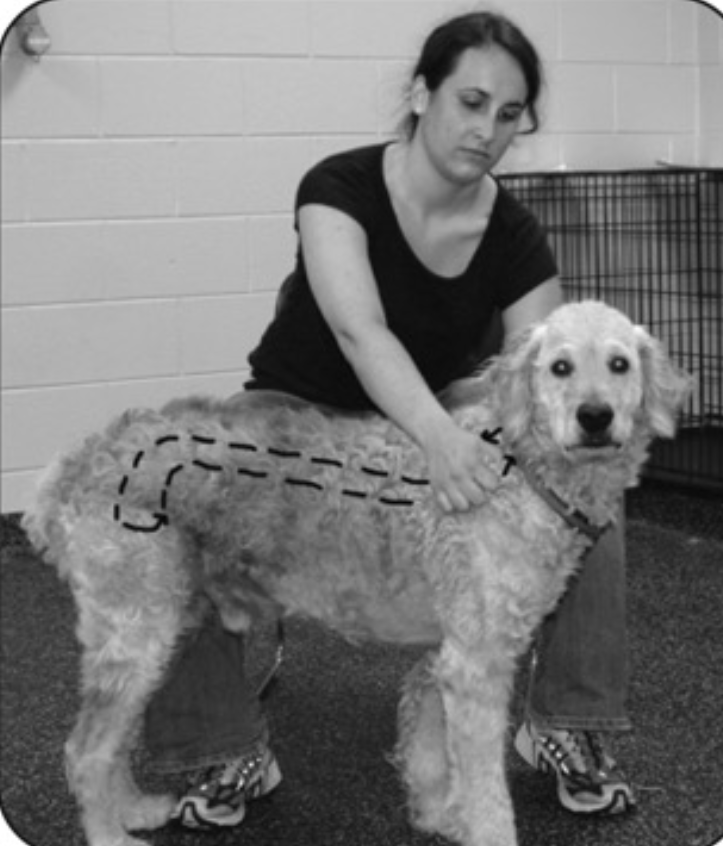
SAFER item 2: Sensitivity (Scoring and what it tells us)
Tells us
if dog has any touch sensitivity
how dog responds to touch from strangers
if we need to provide any warnings to future handlers
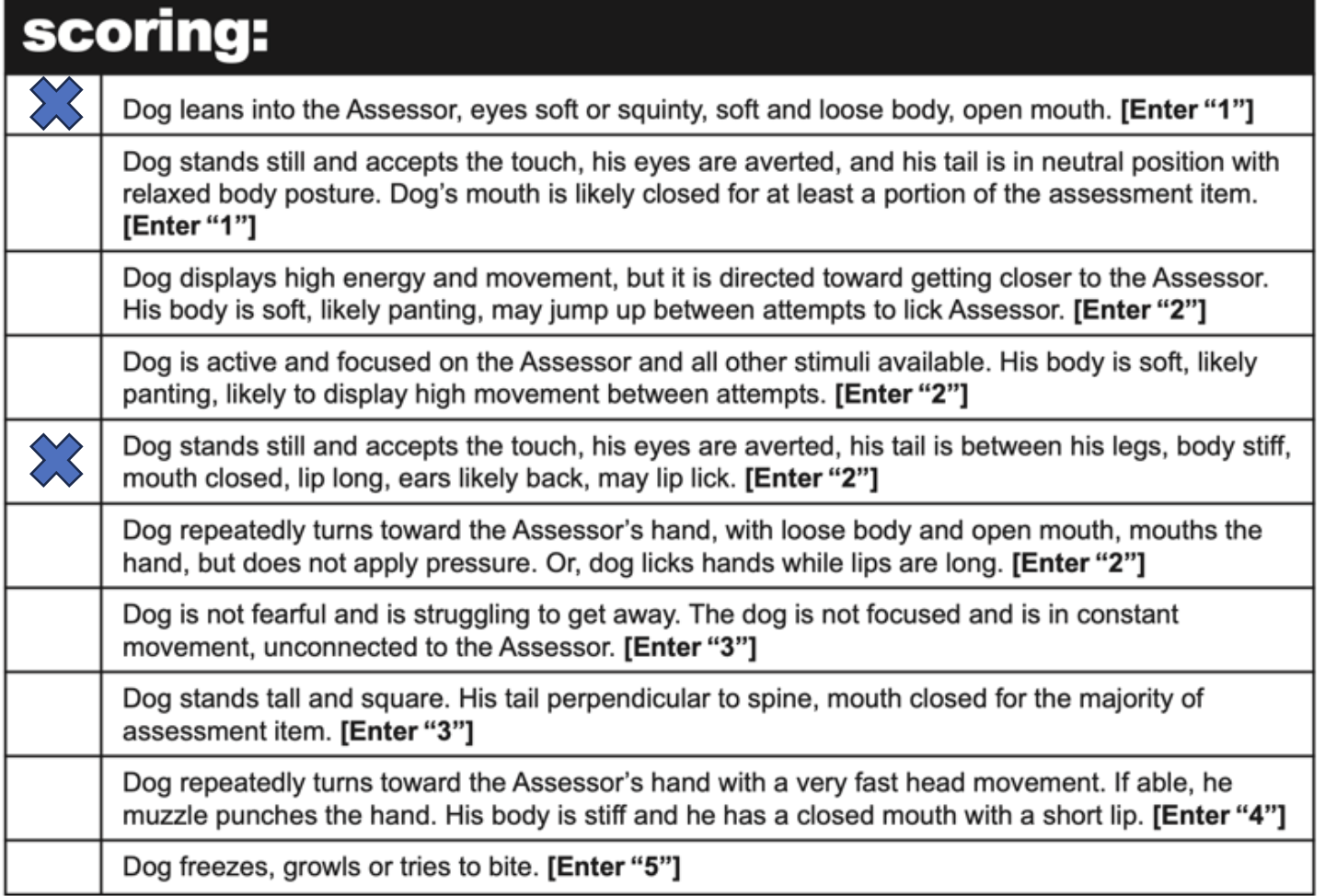
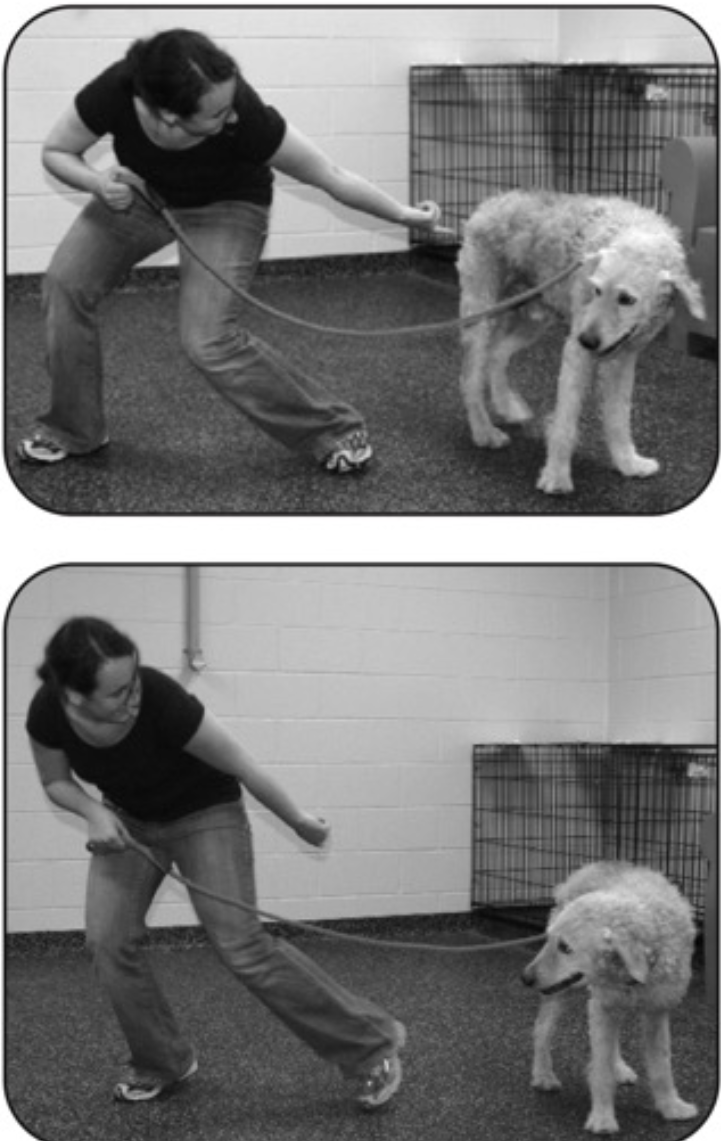
SAFER item 3: Tag (Scoring and what it tells us)
Tells us
how the dog responds to fast movement/ stimuli
if dog feels comfortable to engage in play
if dog may present w/ fear-based aggression
identify jumpy-mouthy behavior
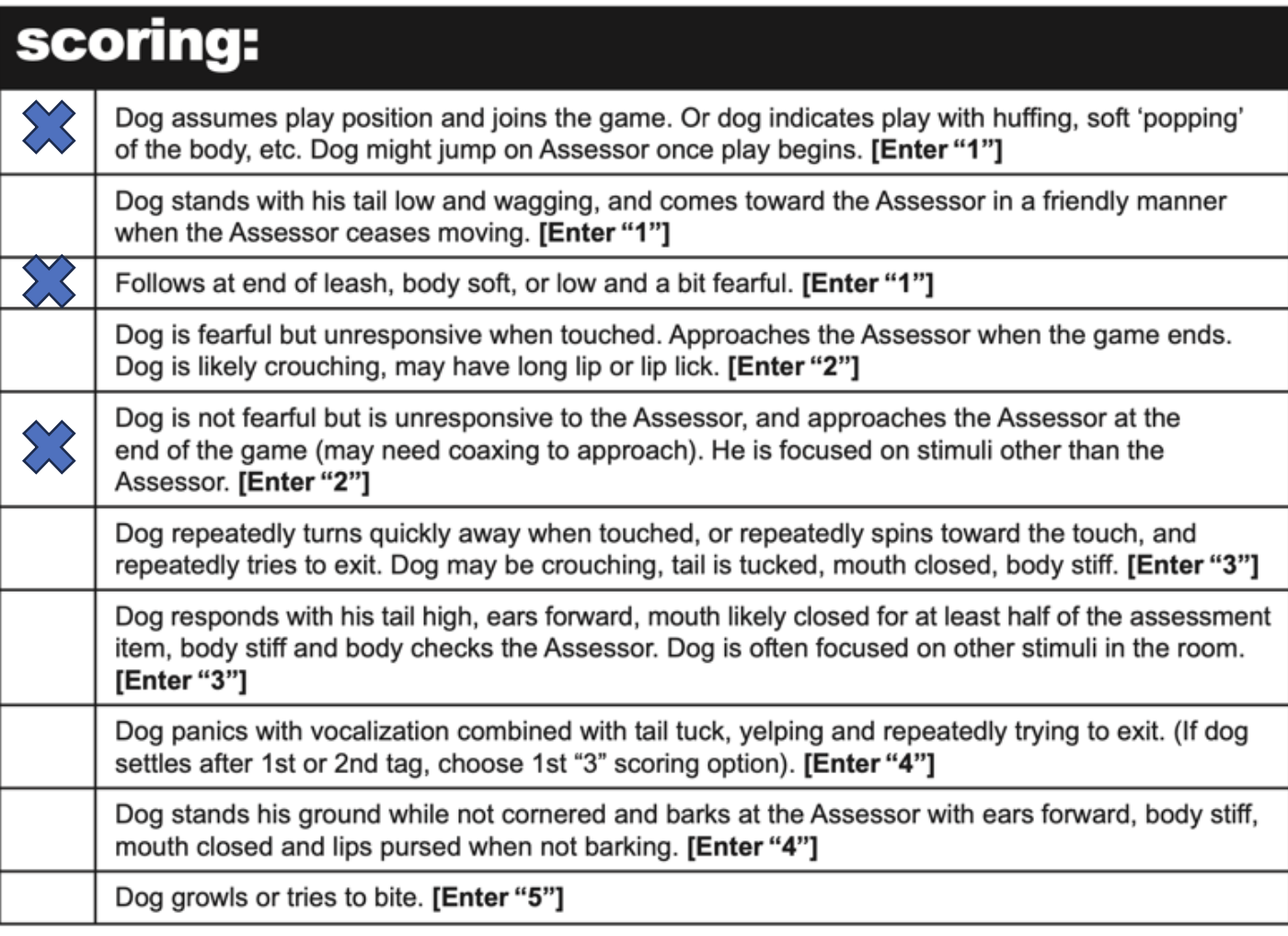
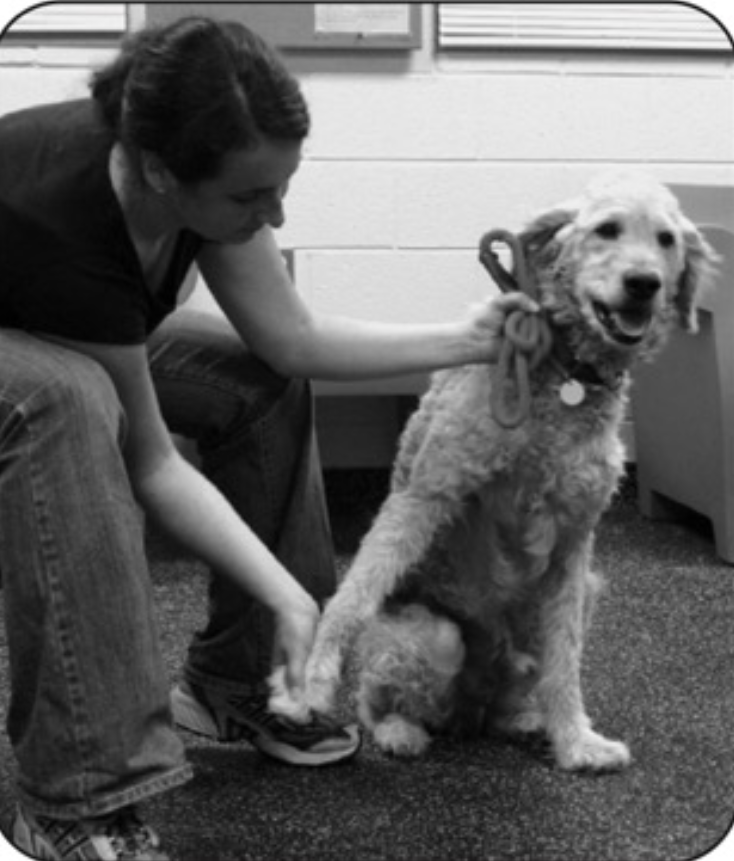
SAFER item 4: Squeeze (Scoring and what it tells us)
Tells us
if dog has any touch sensitivity
how dog responds to mild restraint for up to 3 seconds
how dog responds to repeated discomfort
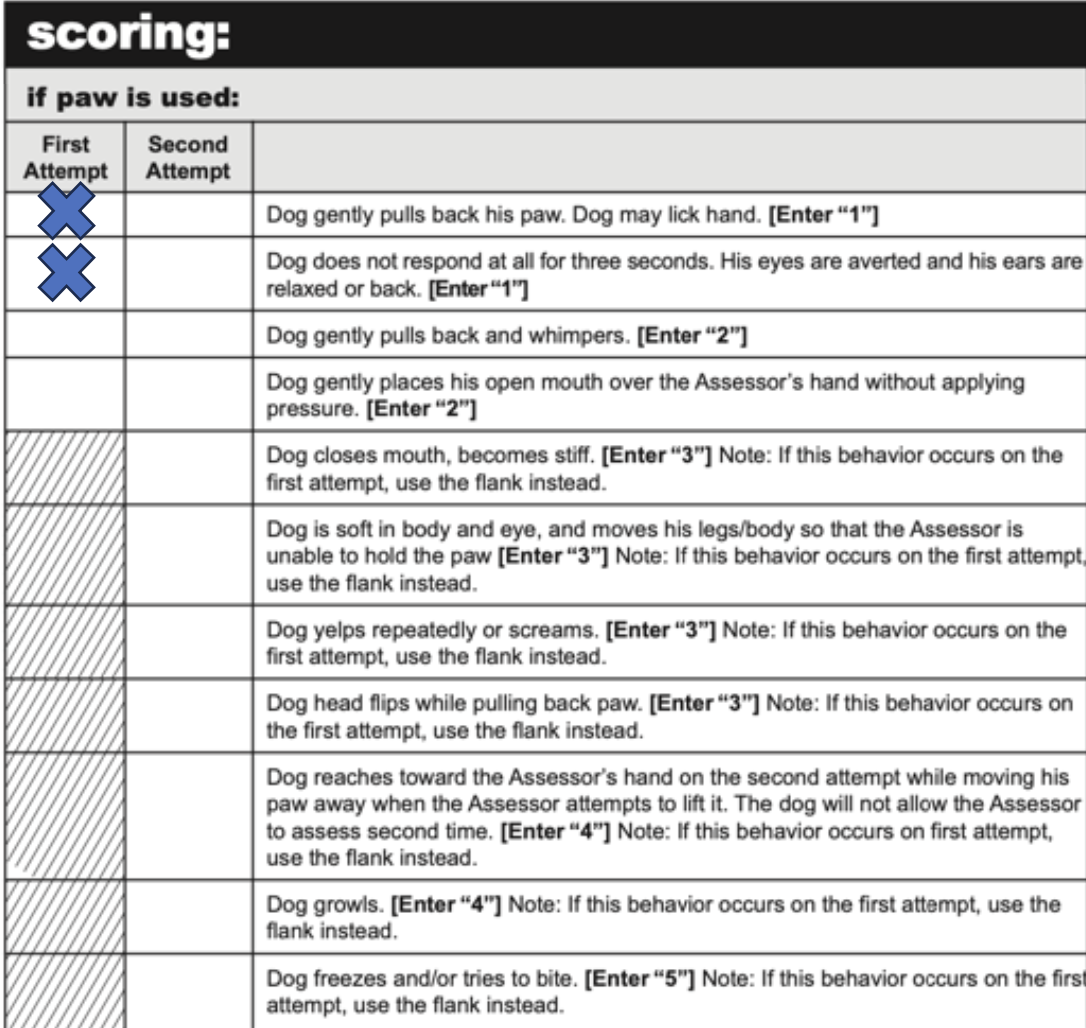
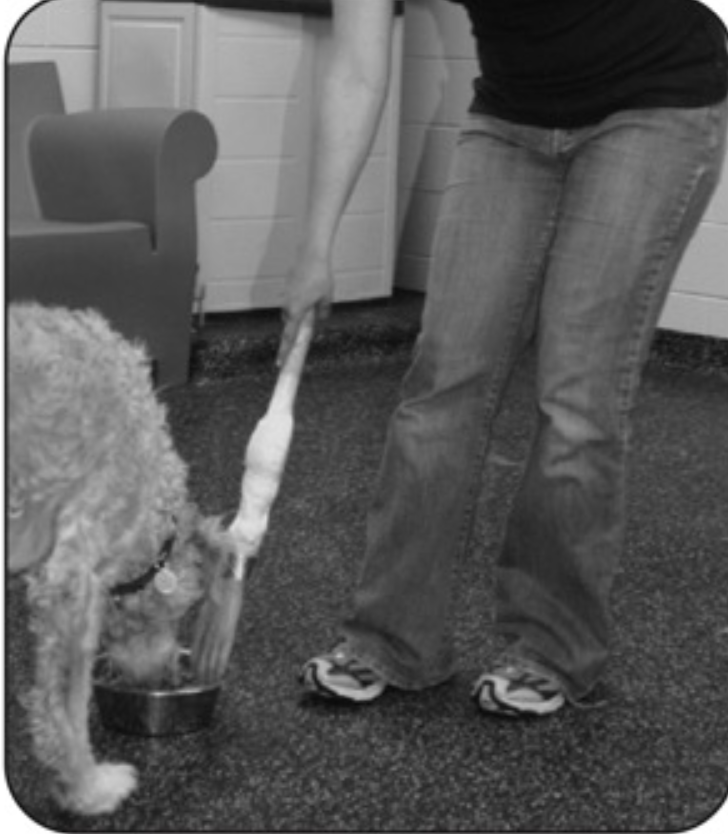
SAFER item 5: Food (Scoring and what it tells us)
Tells us
if dog has food-related aggression (resource guarding)
severity of respond to food
motivation of food as a reward
potential to rehome into home w/ kids
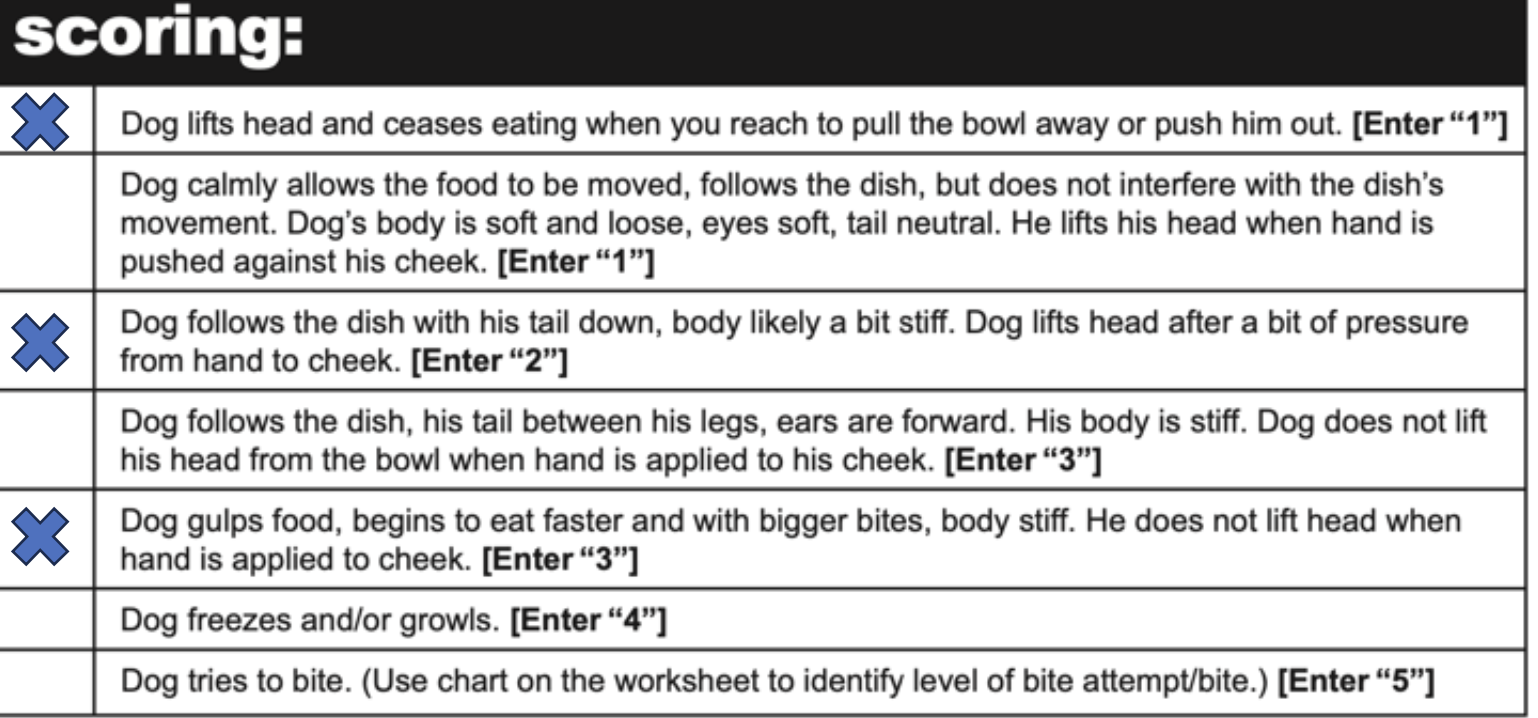
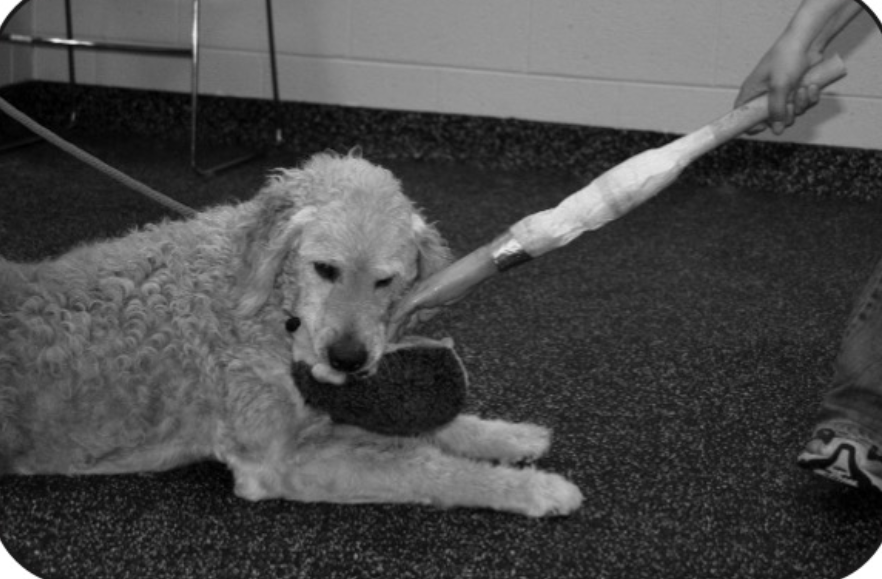
SAFER item 5: Toy (Scoring and what it tells us)
Tells us
if dog has toy/possession-related aggression (resource guarding)
severity of respond to toy/rawhide
motivation of toy/rawhide as a reward
potential to rehome into home w/ kids
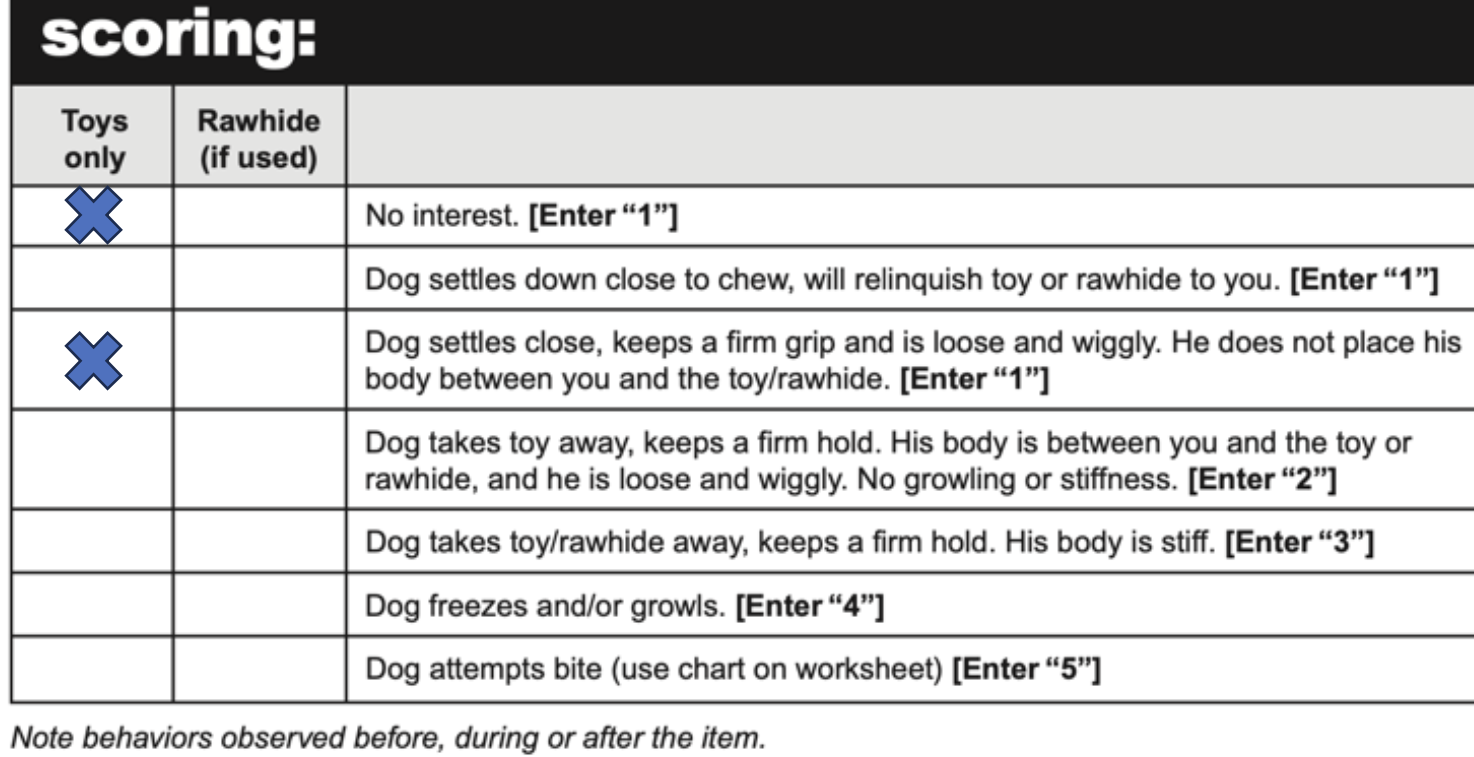
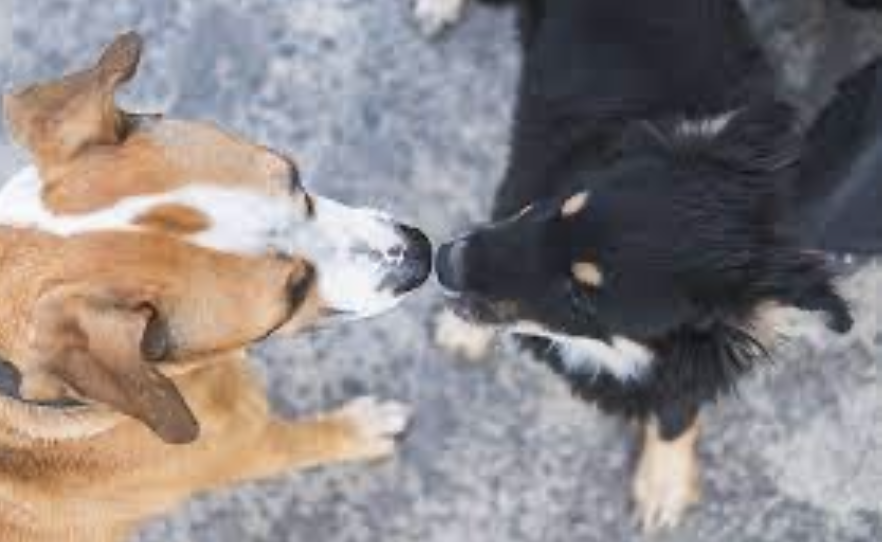
SAFER item 6: Dog-dog (Scoring and what it tells us)
Tells us
if dog has dog related fear or aggression
if dog has reactivity towards other dogs
potential to rehome into home w/ other dogs
are they dog selective
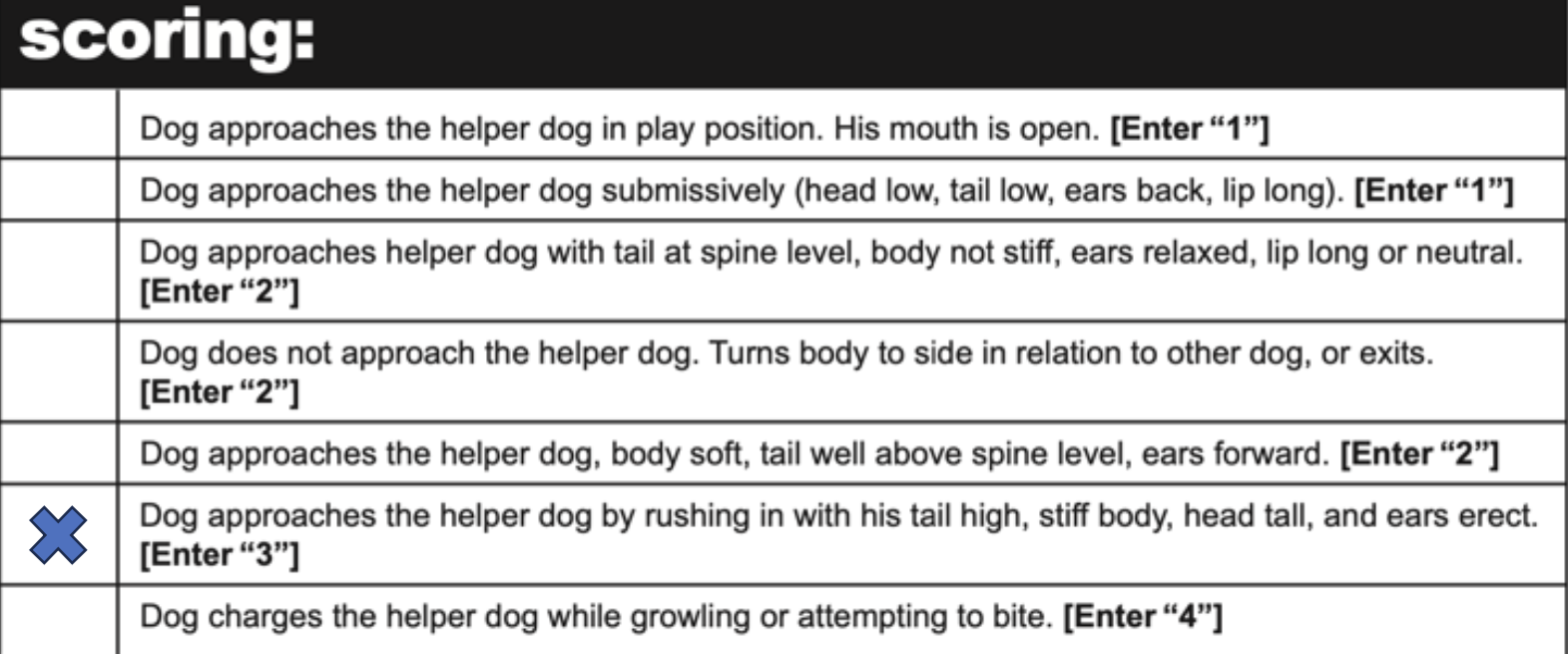
SAFER scoring
P = potential behavior modification and/or management
R = behavior modification and/or management strongly recommended
S = STOP item for safety reasons. Behavior modification and/or management strongly recommended. Move to food if SOP suggests
for ex: if, during Look item, dog averted his eyes and was stiff and fearful, score is 2, the assessor would mark in X in the look column at row 2

Benefits and Drawbacks (SAFER assessments in dogs)
Benefits
relatively short assessments (~10 min)
helps to identify dogs that may benefit from behavior modification
helps to identify adoptive home requirements/limitations (kids, dogs)
provides precautions needed to safely manage dog in shelter and new home
Drawbacks
doesn’t provide much info on adoptive home matching
designed for dogs over 6 m (what’s used for puppies)
questions about reliability/ validity of behavior translating into home
behavior assessment is a snapshot of time, highly influence by animal’s current emotional state, stress level, and environment
Canine-ality asessment
developed by ASPCA in collab w/ research/behavior specialists
provides adult and puppy personalities
offers customized pet matching to ensure client satisfaction when adopting a dog
need to perform SAFER assessment first
not common in practice to do Canine-ality assessment but most shelters do assign personality
person doing assessment should be unfamiliar w/ animal to prevent bias
Canine-ality tools
Facility requirements and equipment
get acquainted room
outside fenced play area/yard
high value dog treats (hot dogs, soft chewy treats)
variety of dog toys (tennis balls, tug toys, plush squeaky toys)
6 ft leash w/ clasp (kennel ropes and slip leas not appropriate)
watch, stopwatch, or clock w/ second hand
TV/audio monitor
Props for get acquainted room
comfortable but easy to clean chair
trash can
dog toy
dog bed or blanket
large crate
6 items to evaluate (canine-ality assessment)
in a novel room
left alone
energy level/ house behavior
greeting
sociability/ arousal
crate (doesn’t impact score)
play
sociability.arousal
food motivation
what they will work for
manners
desirable behaviors for adopters
Total Score and Color (Canine-ality assessment)
Total score = persistence - lvl of training and attention
Color
high persistence dogs (score bt 15-21) and coded green
dogs likely to work v hard for things they want. green dogs like to be kept busy and need stimulating outlets for their energy. do well w/ adopters who have plenty of persistence and can offer training, exercise, and creative activities to occupy these lively dogs
moderate persistence dogs (score 7-14) and coded orange
will work for what they want but not as firmly committed to pursing their own agenda. Though may require some training, dogs are responsive, and thrive on regular interaction and activity in their lives
mild persistence dogs (score 0-6) and coded purple
when they pursue something, likely to give up pursuit if they encounter obstacles or diverting alternative. ideal dogs for novice dog owners bc relaxed, tolerant, and well-mannered
Description (canine-ality assessment)
selecting personality that bests suits motivation of dog within color category
socially motivated
life of party
green
goofball
orange
constant companion
purple
internally motivated
free spirit
green
wallflower
orange
couch potato
purple
externally motivated
go-getter
green
busy bee
orange
teacher’s pet
purple
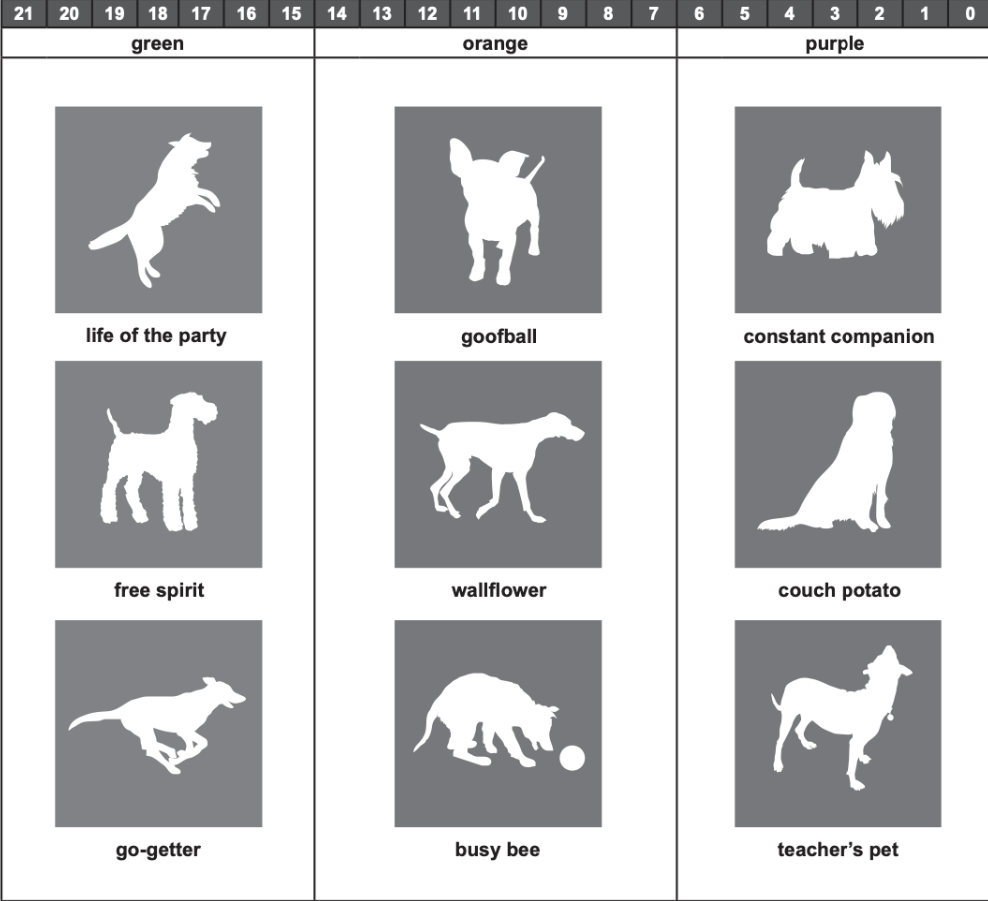
Example of a Meet Your Match (MYM) and Canine-alities
Gloria
5 yr husky
requires a lot of stimulation and training
loves to go on long walk, always outside
independent, doesn’t tend to work for food or social contact
Free spirit
green coded/ high persistence
internally motivated
Benefits and Drawbacks of Canine-ality Assessments in dogs
Benefits
helps to match adopter to dog personality that best suits their lifestyle
can tailor enrichment to best suit what animal needs/wants
includes puppy (< 6 mo) personalities for MYM
Drawbacks
v time consuming
needs to be completed after SAFER
may limit which dogs are seen/adopted
questions about reliability/validity of behavior translating into home
behavior assessment is a snapshot of time, highly influenced by animal’s current emotional state, stress level, and environment
Feline-ality assessment
developed by ASPCA in collab w/ research/behavior specialists
during development, found most shelter perform some form of in-cage and handling assessments
offers customized pet matching to ensure client satisfaction when adopting a cat
not common in practice to complete full Feline-ality assessment, most shelters do some variation of it
person doing assessment should be unfamiliar w/ animal to prevent bias
Feline-ality tools
assessment room (novel room)
10’ X 10’
no hiding places
quiet and free of distractions
sound machine can be used to decrease outside noise
silent stopwatches
chair
plastic or metal (no absorbing odor and be able to disinfect)
cat toys
clean toys
one of a: toy mouse, cat charmer, feather wand, and a ball
replace or wash
cat carrier
disinfect carrier as needed
dry and have a chance to air after disinfection
clipboard
11 items to evaluate (Feline-ality assessment)
In cage
body posture
social behavior
greeting approach
social behavior
cage condition
novelty/adaptation
response when door is opened
in novel environment
intro to space
social behavior
novelty/adaptation
call and approach
social behavior
response to open hand
social behavior
stroking/petting
social behavior
play
social behavior (i think)
hug
novelty/adaptation
sensitivity
novelty/adaptation
Feline-ality assessment (Valiance and Color)
Valiance = response to novel stimuli, being valiant
Color
total of 0-13 = low valiance
purple cat
total of 14-28 = medium valiance
orange cat
total of 29-43 = high valiance
green cat
Feline-ality assessment (Description)
Independent-gregarious scale = social behavior towards humans
total of 2-10 = independent
total of 11-20 = social
total of 21-32 = gregarious
Meet Your Match (Feline-alities)
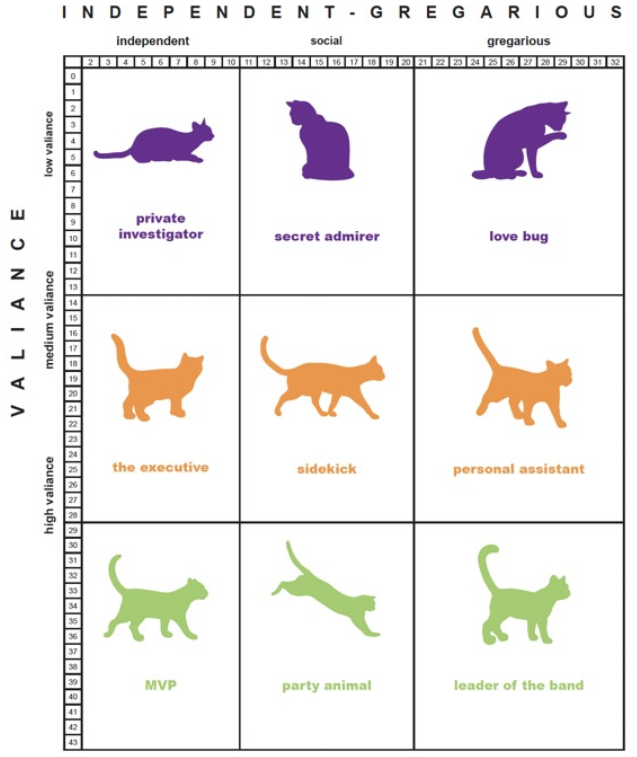
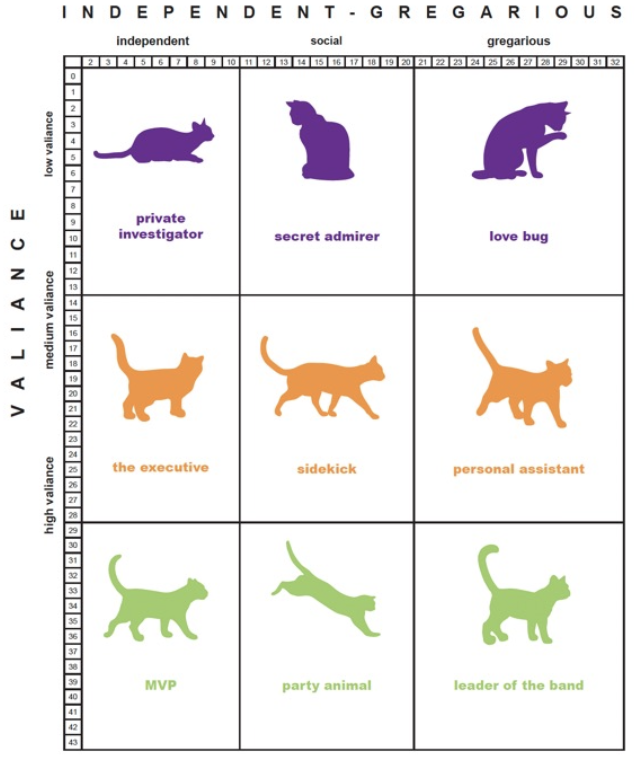
Feline-alities example
Dusty
10 yr old DSH cat
easily adaptable to new environments
low stress seen in cage
loves to play
easy to handle
runs to front of cage when staff enters the room
Leader of band
Benefits and Drawbacks (Feline-ality assessments in cats)
Benefits
helps to match adopter to cat personality that best suits their lifestyle
can tailor enrichment to best suit animals needs/wants
identify best enclosure for animal (cage, room, foster)
Drawbacks
v time consuming
designed for adult cats, kitten results would be skewed and not reflective of adult behavior
may limit which cats are seen/adopted
questions about reliability/ validity of behavior translating into home
behavior assess,ent is a snapshot of time, highly influenced by animal’s current emotional state, stress level and environment
In-shelter behavior assessments
How can we improve validity of assessments
review history of animal, if surrendered ensure intake history is gathered
review animal’s history during medical examinations (in shelter and history
daily monitoring
how does animal behave in their day-to-day interactions w/ people
continuously update info
Adoptions (matching and other details)
matching and automated programs exist but depend on shelter resources
often case-by-case basis
many adoptions occur by viewing the animals
owners may adapt their lifestyle to fit an animal they viewed and wanted
adoption matching: helps ensure a better fit between pets and families, reducing the likelihood of pets being returned due to mismatches
adopters (matching and things to consider)
personality type
activity lvls
how often are they home
dwelling/ yard type
what types of activities do they want to do
is there anything they won’t work w/ don’t want in a pet
current animals/ family members
animal experience